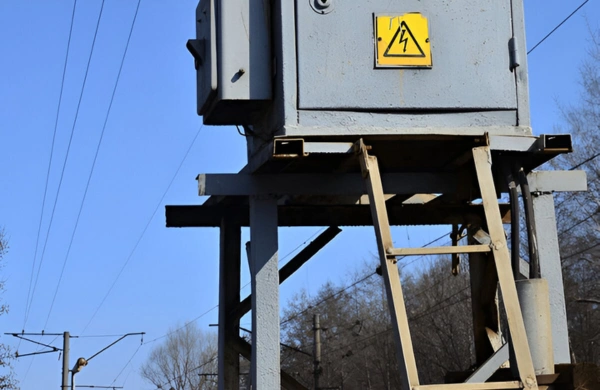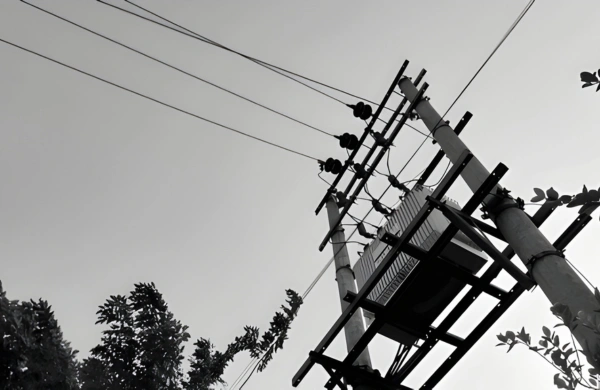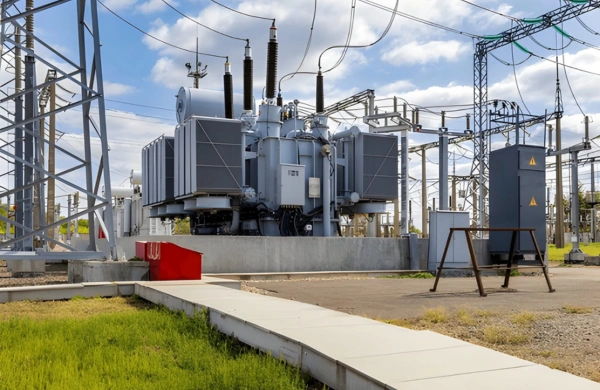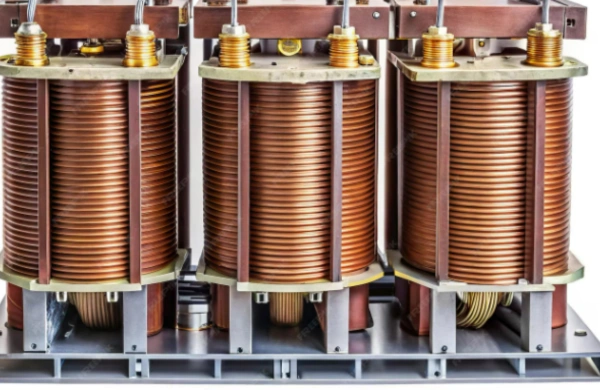Introduction
Railway electrification is redefining modern transportation by improving efficiency, reducing emissions, and ensuring consistent power delivery to traction systems. At the heart of this infrastructure lies the railway transformer — a vital component that steps voltage up or down, enabling stable energy transfer between power substations and rolling stock.
From locomotives and metro systems to high-speed trains and industrial railways, transformers ensure the reliable distribution of power needed for traction, auxiliary systems, and signaling.
Know About Efficient Railway Transformers Supporting Electrified Transport Systems
Zetwerk manufactures high-performance railway transformers designed for energy efficiency, vibration resistance, and long operational life. Built to IEC, EN, and IEEE standards, Zetwerk’s transformers serve the demanding requirements of electrified rail systems across North America and global infrastructure networks.
1. The Role of Transformers in Railway Electrification
Railway transformers are essential for converting high-voltage supply from the power grid into the appropriate voltage required for train propulsion and onboard systems.
Primary functions include:
- Traction power supply: Step-down of 25 kV, 50 Hz or 15 kV, 16.7 Hz overhead line voltage to levels suitable for traction motors.
- Substation transformers: Step-up and step-down functions for feeding catenary systems.
- Auxiliary power supply: Voltage transformation for HVAC, lighting, and control systems.
- Isolation and safety: Electrical separation between high-voltage and onboard control circuits.
By ensuring consistent voltage levels and minimizing power losses, railway transformers maintain performance reliability across long distances and dynamic load conditions
2. Design and Construction of Railway Transformers
Railway transformers must withstand high mechanical stress, temperature fluctuations, and continuous vibration. Zetwerk designs its transformers with a focus on robustness, efficiency, and long-term reliability.
Key design elements include:
- Core: Built using high-permeability grain-oriented silicon steel to minimize core losses and magnetostriction noise.
- Windings: Copper conductors with transposed and reinforced insulation to resist vibration and thermal stress.
- Cooling systems: Oil natural (ONAN), oil forced (OFAF), or air-cooled (AN/AF) configurations depending on locomotive or substation use.
- Insulation materials: Nomex paper, epoxy varnish, or cast resin systems rated for Class F or H operation.
- Enclosure: Shock-absorbing, corrosion-protected housings designed for onboard or outdoor use.
Each design is optimized using finite element analysis (FEA) to simulate magnetic flux, temperature gradients, and mechanical stress, ensuring operational safety and longevity.
3. Types of Railway Transformers
Different railway systems demand different transformer configurations, depending on frequency, power capacity, and installation environment.
Common types include:
- Traction Transformers: Installed on locomotives or EMUs (Electric Multiple Units) to supply traction converters and auxiliary systems.
- Auto Transformers: Used in 2×25 kV systems to minimize voltage drop and improve power quality across long routes.
- Auxiliary Transformers: Power lighting, ventilation, and train control systems.
- Substation Transformers: Step-up or step-down voltage for catenary supply in traction substations.
- Static Converter Transformers: Support energy conversion for regenerative braking and DC traction networks.
Zetwerk offers modular transformer configurations designed to integrate seamlessly into existing traction systems and substation layouts.
4. Performance Characteristics and Standards Compliance
Railway transformers must operate under fluctuating loads and severe environmental conditions while maintaining efficiency and electrical integrity.
Key performance parameters:
- Efficiency: Up to 99% achieved through precision lamination stacking and low-loss conductors.
- Thermal class: Class F (155°C) and H (180°C) insulation for continuous duty cycles.
- Vibration resistance: Designed to meet EN 61373 mechanical shock and vibration standards.
- Noise level: Optimized core clamping to minimize magnetostriction noise for passenger comfort.
- Frequency: Configurable for both 16.7 Hz (European) and 50/60 Hz (global) systems.
Zetwerk railway transformers comply with:
- IEC 60310 (Railway Applications – Traction Transformers)
- EN 61373 (Shock and Vibration)
- IEEE C57.12 (Transformer Standards for Industrial Applications)
5. Zetwerk’s Manufacturing and Testing Infrastructure
Zetwerk’s advanced manufacturing ecosystem integrates coil winding, core assembly, vacuum processing, and high-voltage testing under one roof. This vertical integration ensures quality consistency and traceability from raw material to final product.
Manufacturing process highlights:
- Automated winding machines maintain precision conductor spacing and insulation integrity.
- Vacuum drying and oil impregnation remove moisture for improved dielectric performance.
- Dynamic balancing and vibration testing simulate locomotive conditions.
- Thermal cycling and load tests confirm endurance under traction loads.
- High-voltage and impulse testing validate insulation strength for onboard and outdoor applications.
Each transformer is supplied with complete FAT (Factory Acceptance Test) documentation, performance curves, and test certificates compliant with IEC and IEEE standards.
6. Application-Specific Engineering
Zetwerk offers customized transformer designs tailored for:
- Electric Locomotives and EMUs: Compact traction transformers with high power density and lightweight cores.
- Metro and Light Rail Systems: Dry-type or resin-cast transformers with low maintenance requirements.
- Traction Substations: High-efficiency oil-cooled transformers for reliable long-distance power distribution.
- Industrial Rail Networks: Ruggedized transformers designed for heavy freight and mining operations.
Each project undergoes design optimization based on input voltage, load profile, environmental conditions, and installation footprint.
7. Durability, Safety, and Reliability
Railway transformers operate in harsh environments involving vibration, humidity, and continuous mechanical shock. Zetwerk ensures durability through:
- Mechanical reinforcement: Stiffened winding supports and frame-mounted shock absorbers.
- Corrosion protection: Anti-rust coatings and weather-resistant enclosures for outdoor exposure.
- Moisture protection: Sealed housings with desiccant breathers and vacuum processing.
- Temperature management: Multi-point sensors for real-time temperature monitoring.
- Fire safety: Flame-retardant insulation materials meeting international safety norms.
These design elements ensure operational reliability over long service intervals with minimal maintenance.
8. Zetwerk’s Capabilities for North American Rail Projects
With increasing investments in rail electrification and urban transit, Zetwerk supports North American OEMs, EPC contractors, and transit authorities with reliable transformer solutions.
Key capabilities include:
- Power ratings up to 10 MVA for traction applications.
- Voltage classes from 11 kV to 132 kV for substations.
- Modular mounting configurations for underframe and roof-mounted systems.
- In-house shock and vibration test benches compliant with rail standards.
- UL, CSA, and IEEE compliance documentation for export projects.
Zetwerk’s integrated manufacturing control ensures consistent quality, on-time delivery, and competitive lifecycle costs for large-scale railway projects.
9. Environmental Sustainability and Energy Efficiency
Zetwerk is committed to sustainable design and environmentally conscious manufacturing.
Key practices include:
- Use of low-loss CRGO and amorphous cores to reduce power loss.
- Eco-friendly insulating fluids such as ester-based oils.
- Recyclable materials and waste management under ISO 14001 compliance.
- Lifecycle optimization for reduced maintenance and carbon footprint.
These initiatives align with global goals for sustainable transportation and energy-efficient infrastructure.
Conclusion
Railway transformers are the unsung enablers of modern electrified transport, ensuring efficient, safe, and reliable energy transfer from the grid to the tracks. With expanding rail electrification projects across North America and beyond, demand for robust, high-efficiency traction transformers continues to rise.
Zetwerk delivers railway transformers designed for endurance, precision, and sustainability. Built to international standards and validated through rigorous testing, Zetwerk’s solutions ensure stable performance, reduced energy losses, and long-term operational reliability for passenger, freight, and metro systems.




With end-to-end manufacturing control, strict process validation, and engineering customization, Zetwerk stands as a trusted partner for electrified rail infrastructure worldwide.
FAQs
a. Zetwerk offers railway transformers from 11 kV to 132 kV, customizable for traction or substation applications.
a. Yes, Zetwerk designs lightweight traction transformers with vibration-resistant construction for onboard systems.
a. All units comply with IEC 60310, EN 61373, and IEEE C57.12 standards.
a. Each transformer undergoes vibration, temperature cycling, and impulse tests to simulate real-world operating conditions.
a. Yes, Zetwerk provides tailored transformer solutions based on voltage class, power rating, and installation configuration.








